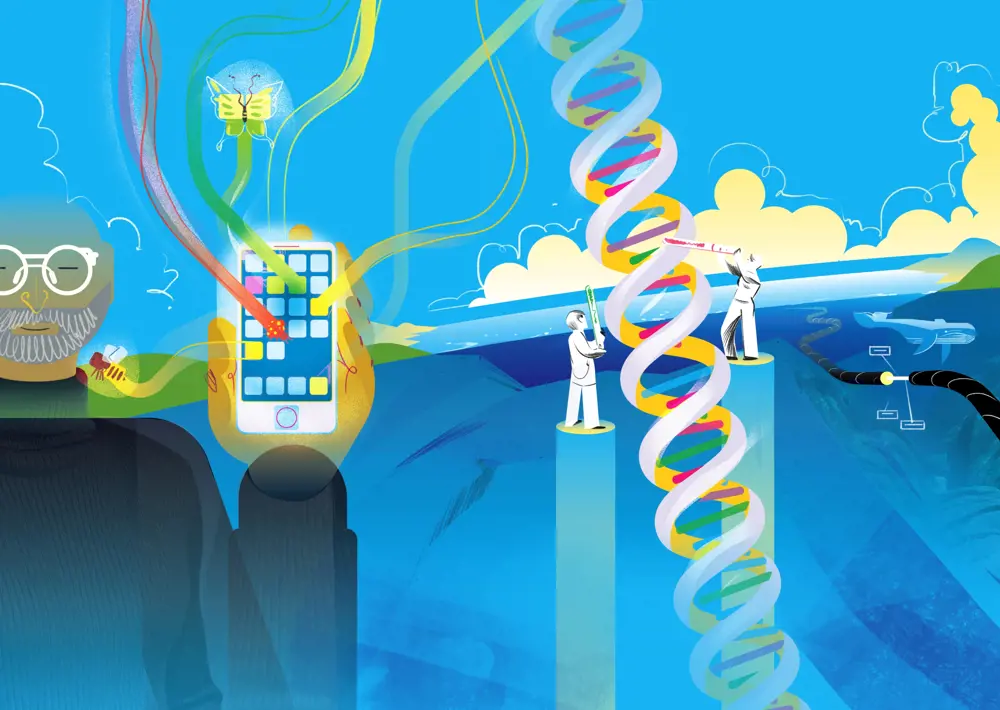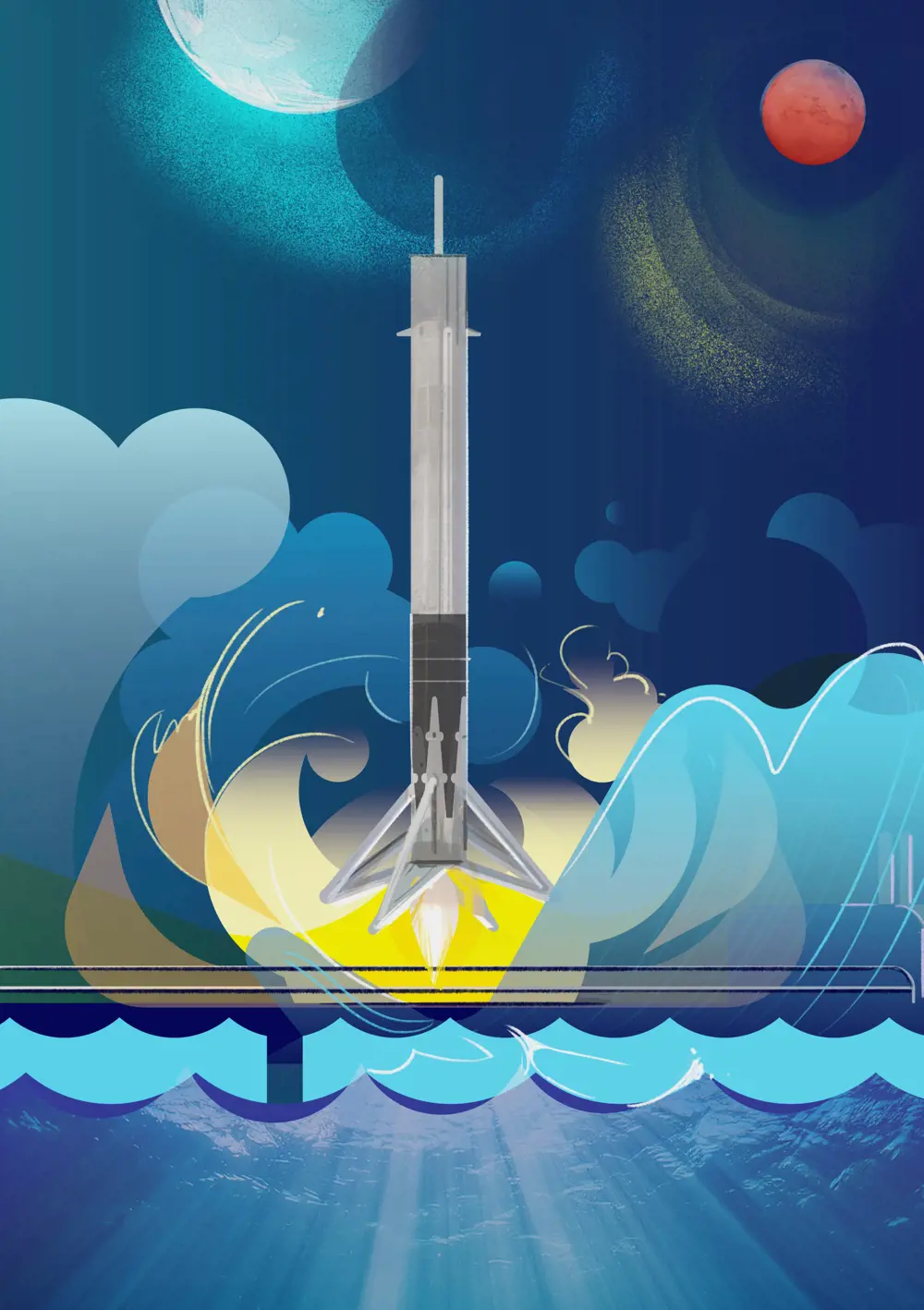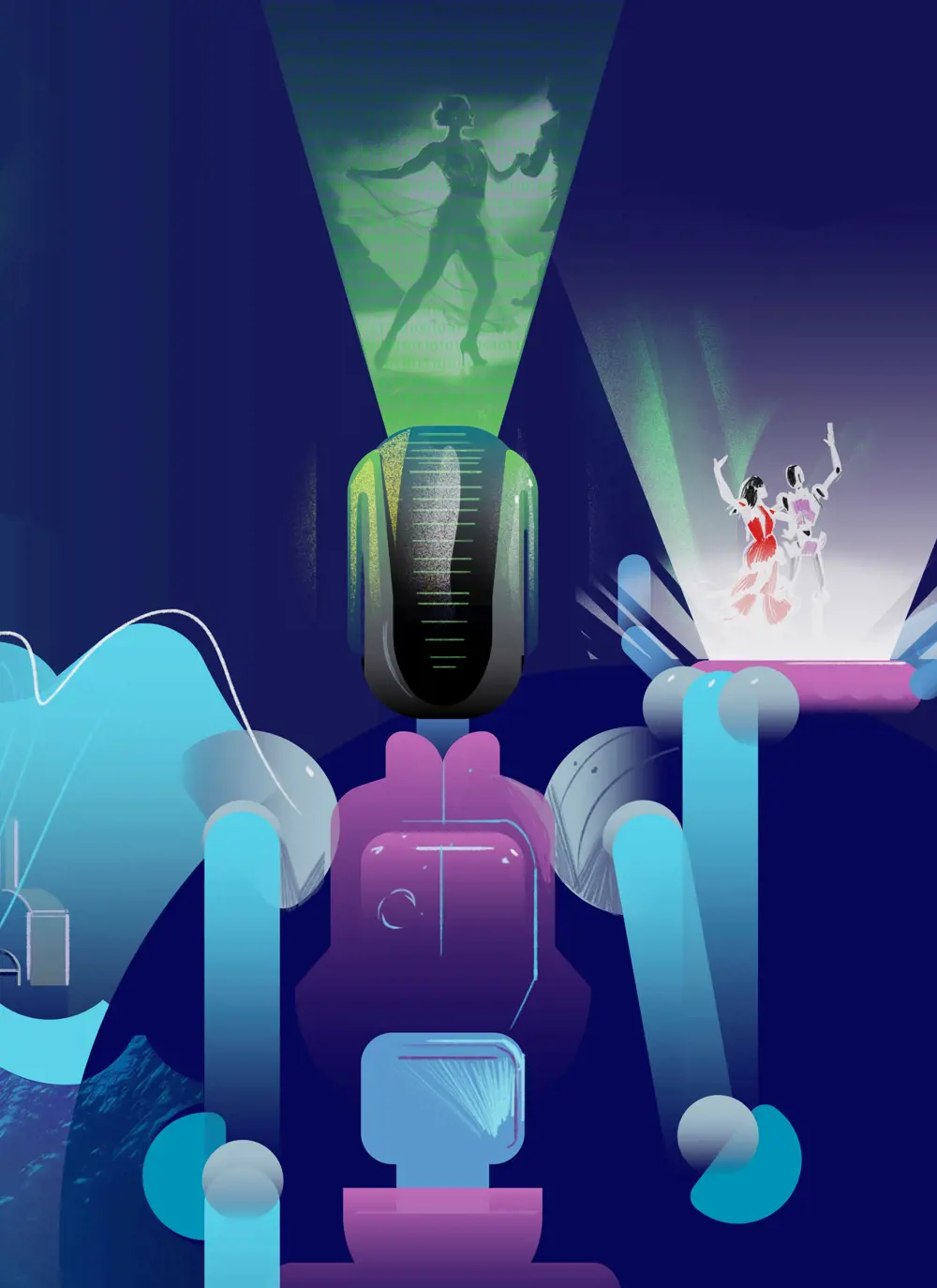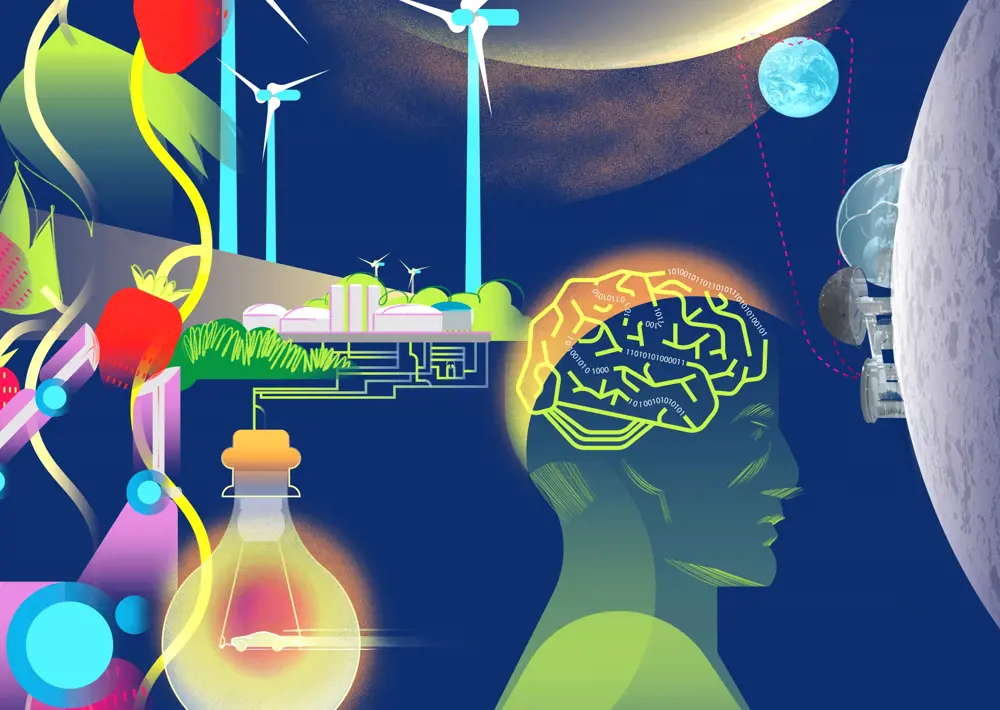
From 1999 to 2049: looking back and looking forward

Benjamin Leon for Ingenia
From 1999 to 2024: our engineering highlights

Clockwise from top left: Nyasha Mutembwa, Cathy Craig, William Webb, Judith McMinn
Nyasha Mutembwa | Graduate civil engineer, Amey
Panellist at the inaugural Ripple Effect conference in 2024, championing equality, diversity and inclusion and youth empowerment in engineering
“As someone born in 1999, this is a very difficult question because so much has changed. The James Webb Space Telescope changed the way people thought about and saw the world. If that’s possible, what else is? It made us care about our little planet much more.”
Professor Cathy Craig | Founder, VR athletic training startup INCISIV
World’s first academic to use VR for studying decision-making in sports
“I would say the smartphone. Although the touch screen and built-in camera were not so revolutionary in themselves, they acted as a catalyst for the creation of countless apps that have transformed how we work, rest, and play.”
Judith McMinn | Founder, neurotechnology startup Rezon
Developed Halos®, a protective headband for contact and collision sports that reduces concussion risk by 74%
“Up to 40% of brain injuries are classified as ‘mild’, but brain trauma in sport can be a serious injury that’s hidden in plain sight. New brain imaging techniques have unveiled ‘silent’ brain injuries that previously would have gone unnoticed. More sophisticated neuroimaging allows for the development and determining the efficacy of brain protection like Halos®”
Dr William Webb FREng | Telecommunications engineer
Changed the way that wireless communications carry data by inventing variable modulation
“The iPhone changed completely the way that we interact with the Internet. It allowed the iPad to emerge and showed how touchscreens should work. We now couldn’t live without them and that’s all down to the user interface and business model that Apple pioneered.”

Left to right: Dr Rahul Mandal, Raymond Oliver, Laura Tuck, Will Stewart
Dr Rahul Mandal | Technical Lead, Nuclear AMRC, University of Sheffield
Former Great British Bake Off winner; baked a working clock cake with fellow Bake-Off stars Andrew Smyth and Giuseppe Dell’Anno
“The advancements in safety as well as efficiency in the nuclear sector have already improved the energy situation in many countries and will resolve the existing and future crisis of affordable energy.”
Professor Raymond Oliver FREng | Chemical and biomaterials engineer
Nearly 50 years in engineering, focused on materials, biology and multidisciplinary collaboration
“Precision genetic engineering tools have emerged over the past two decades, thanks to nanotechnologies and biotechnology coming of age. This has led to the ‘engineering’ of molecular gene editing through CRISPR and advanced generative AI made real.”
Laura Tuck | R&D Team Lead, Washing Machine Project
Previously worked on Elvie, a wireless and wearable discreet breast pump, and Peequal, a sustainable ‘squat’ urinal for women
“A significant rise in women in engineering over the past 25 years has driven essential progress in ‘femtech’, from advanced breast pumps to female-centric crash test dummies. Women in engineering have had profound influence over women’s health and technology in this time.”
Professor Will Stewart FREng | Photonics and optical fibre engineer
Invented the standard method of fibre index profiling, which determines the performance of optical fibres and how light propagates in them
“There really is no serious alternative to the internet here. I would also nominate the optical fibre, which carries 99% of data to smartphones (including WiFi).”

Left to right: James Roberts, Norah Magero, Khadijah Ismail, Ginny Clarke CBE FREng

Benjamin Leon for Ingenia
James Roberts | CEO and co-founder, mOm incubators
Won 2014 Dyson Award and 2023 Princess Royal Silver Medal
“The event that truly amazed me was SpaceX successfully completing its first vertical landing. It was incredible to watch, and everyone I knew who witnessed it for the first time had their jaws wide open.”
Ginny Clarke CBE FREng | Civil engineer
First woman appointed as the UK’s Chief Highway Engineer
“Real-time traffic flow information from monitoring and modelling has transformed travel and the logistic industries in terms of reliability. It resulted in just-in-time deliveries and more reliable travel information to customers for delivery of goods.”
Khadijah Ismail | Aerospace engineer
Self-published three STEM books for children
“Companies like SpaceX and Blue Origin have transformed what was once the domain of governments into an arena of innovation and possibility. Reusable rocket technology has significantly reduced the cost of accessing space.”
Norah Magero | Mechanical engineer and renewable energy consultant
Won the 2022 Africa Prize for Engineering Innovation for inventing a solar-powered fridge designed to improve access to vaccines
“I truly believe that solar energy has made the greatest strides in global impact. Many countries and industry players have actively shifted towards clean energy and solar photovoltaic technology has quickly evolved to provide varied opportunities for access, building economies and livelihoods.”
***************************************************
So, what’s next? Ingenia contributors consider 2024-2049...

Benjamin Leon for Ingenia
Eneni Bambara-Abban | Robotics engineer and creative technologist
Founder of The Techover Foundation, supporting those from underserved backgrounds into STEM
“AI integration in robotics will enable talking robots that can learn on the fly, make their own decisions, and collaborate with humans in ways we haven’t even thought of yet. It’s an awesome time to be a robotics engineer – the future is promising and the possibilities are endless!”
Will Arnold | Head of Climate Action, the Institute of Structural Engineers
Contributed to design of the Rwanda Institute of Conservation Agriculture, the world’s first regenerative university campus
“Construction materials that will heal the environment. They might resemble today’s building materials, but be created in positive ways. Or they might be new, with foundations made from upcycled wind turbine blades, clad in algae and energy-generating polymers, and filled with finishes made from fungus.”
Sabina Burmester | Principal Process Innovation and Design Engineer, Xampla
Co-inventor of multiple patents on novel processes to create new products in the food, printing and automotive industry
“Innovation in sustainable materials is key to reducing our impact on the environment. Developing novel materials will rely on close collaboration between scientists and engineers to creatively problem solve and allow for economically viable processes to be scaled up from lab through to manufacturing.”
Isabelle Pickett | Wells engineer
Attended COP27 as a Youth Delegate and now leads the official European youth delegation at conferences all over the world
“Cleaner energy production will be driven by advanced materials and smart infrastructure, such as digital twins powered by AI. These developments will help manage resources more effectively and reduce environmental impact, ensuring the engineering industry adapts and thrives in a changing energy landscape.”

Left to right: Eneni Bambara-Abban, Will Arnold, Sabina Burmester, Isabelle Pickett

Benjamin Leon for Ingenia

Clockwise from top left: Dr Ian Nussey OBE, Ava Garside, Dr Caroline Hargrove CBE FREng, Professor Yulong Ding FREng
Dr Ian Nussey OBE FREng | 53 years at IBM as a systems engineer and skunkworks manager
Former IBM Academy of Technology EMEA VP; won the 2016 Royal Academy of Engineering President’s Medal
“Blockchain, quantum computing and AI will enable agriculture industry engineering innovation to mitigate sustainability threats. Bioengineering will transform planting, growing and harvesting. Complementary breakthoughs will foster vertical farming and hydroponic practices, operator-free automation, climate management and energy harvesting.”
Professor Yulong Ding FREng | Energy materials and process engineer
Inventor of a cryogenic energy storage technology and an in-process CO2 splitting method for closed-carbon-loop ironmaking
“Long duration cryogenic energy storage will be critical for storing energy from renewables, so that it can be fed back into the grid when the sun isn’t shining and the wind isn’t blowing.”
Ava Garside | CEO, Perfect Sense AQ
Became CEO of her company aged 14 after inventing a graphene-based badge that detects unsafe levels of air pollution
“By unlocking graphene’s potential through high-quality and sustainable water desalination, engineers can ensure access to clean water for a growing global population facing an uncertain water future.”
Dr Caroline Hargrove CBE FREng | Chief Technology Officer, Ceres Power
Developed the first computer simulators for Formula 1; Ceres Power won the 2023 MacRobert Award
“Decarbonisation of our energy systems and a significant reduction of energy consumption per head worldwide will allow us to live more sustainably. Electrification will continue at pace where practical, and we will see increased use of green hydrogen, e-chemicals and e-fuels, and sustainable aviation fuel.”

Left to right: Aurelia Brzezowka, Dr Harrison Steele, Michael Kenward OBE
Aurelia Brzezowska | Computer science student at Staffordshire University
Finalist for Inspirational Youth Awards’ STEAM Personality of the Year 2024
“With quantum simulations and brain-computer interfaces, researchers will understand neurodegenerative conditions better, leading to possible cures.”
Dr Harrison Steele | Associate professor in synthetic biology
Mechanical engineer turned synthetic biologist. Won Young Engineer of the Year Award, 2023
“Our improved understanding of biological systems will translate to new possibilities in engineering them. This is already delivering benefits to medicine, and in the next 25 years, we’ll see some of these technologies scaled up for major global challenges in sustainability and climate change.”
Michael Kenward OBE | Writer on science and technology
Former fusion researcher and editor of New Scientist, contributor to Ingenia since 1999
“Next 25 years? Fusion! But that was the promise 50 years ago, when I started as a fusion researcher. Failing that, realisation that net zero is a systems thing. No ‘silver bullet’. Just lots of neat technologies.”
Keep up-to-date with Ingenia for free
SubscribeOther content from Ingenia
Quick read

- Environment & sustainability
- Opinion
A young engineer’s perspective on the good, the bad and the ugly of COP27

- Environment & sustainability
- Issue 95
How do we pay for net zero technologies?
Quick read

- Transport
- Mechanical
- How I got here
Electrifying trains and STEMAZING outreach

- Civil & structural
- Environment & sustainability
- Issue 95